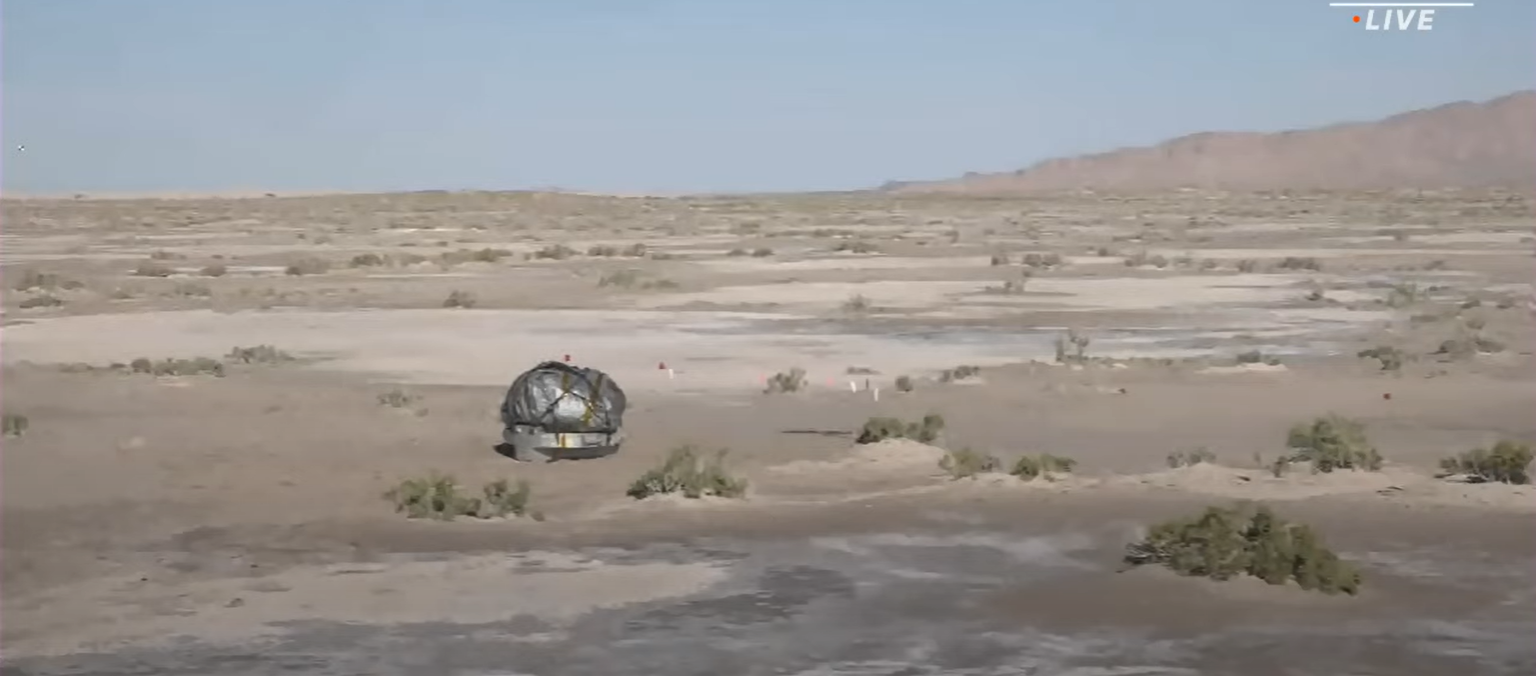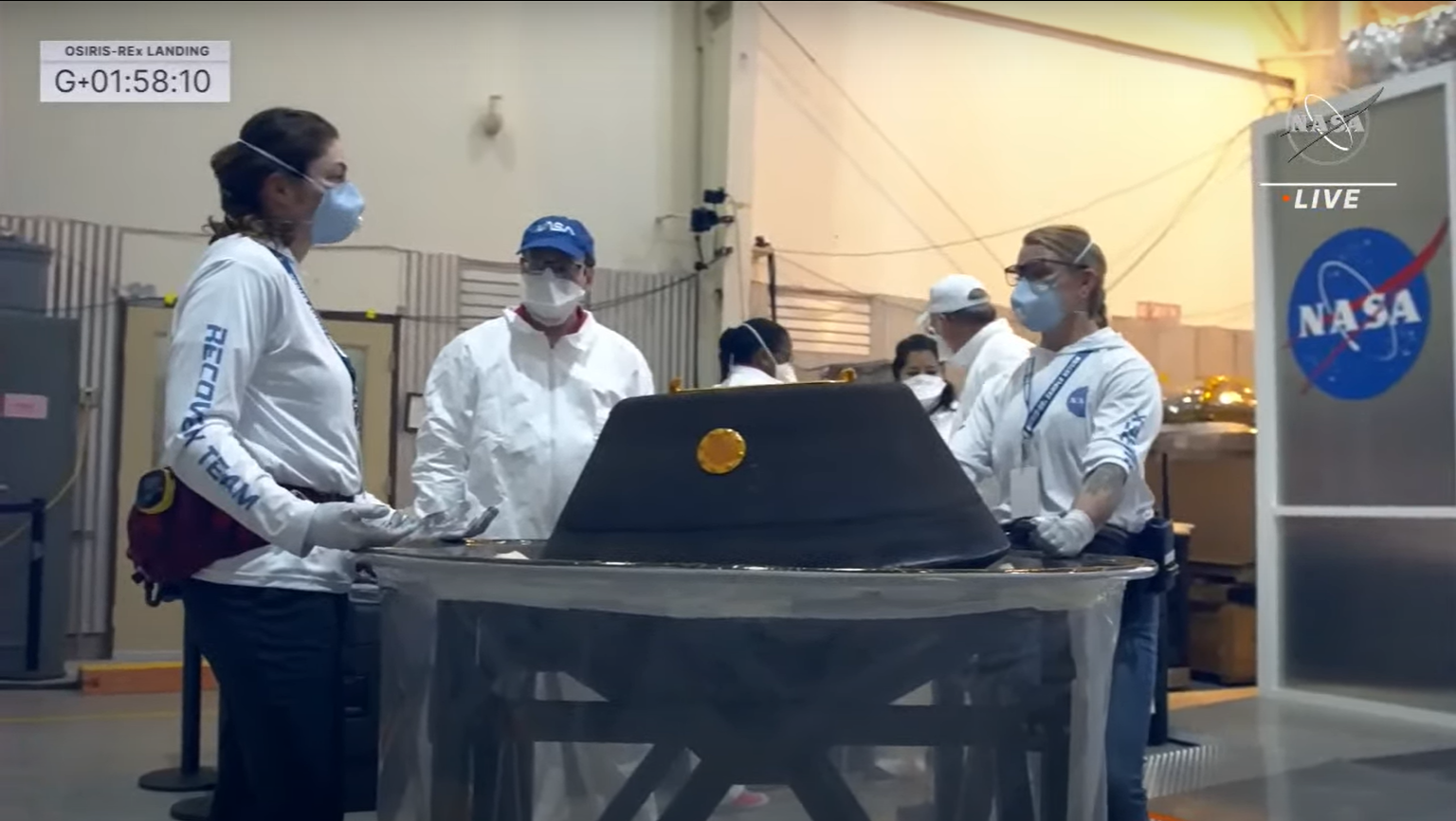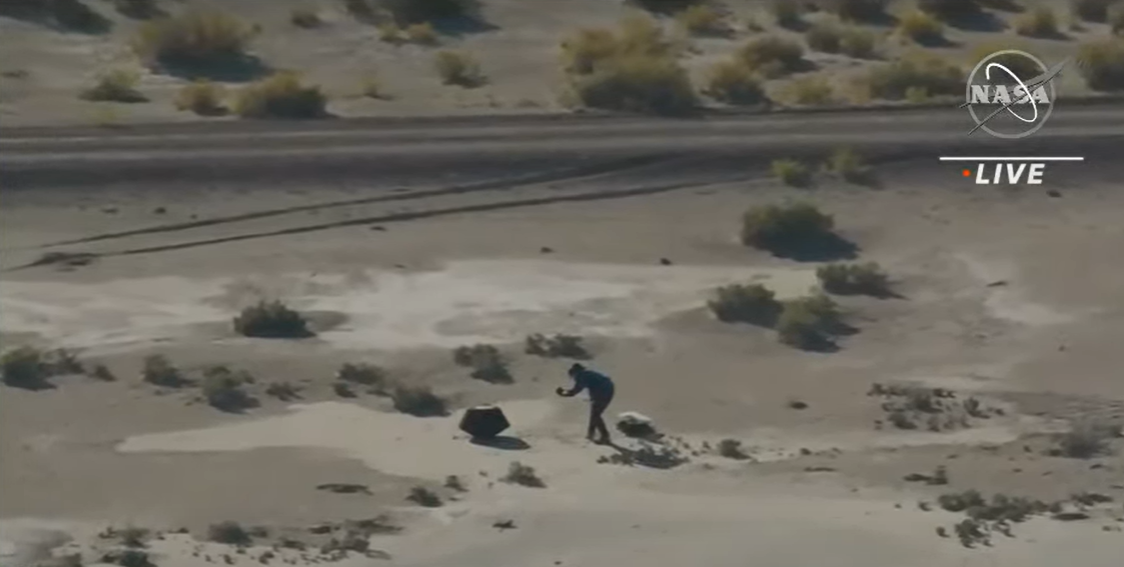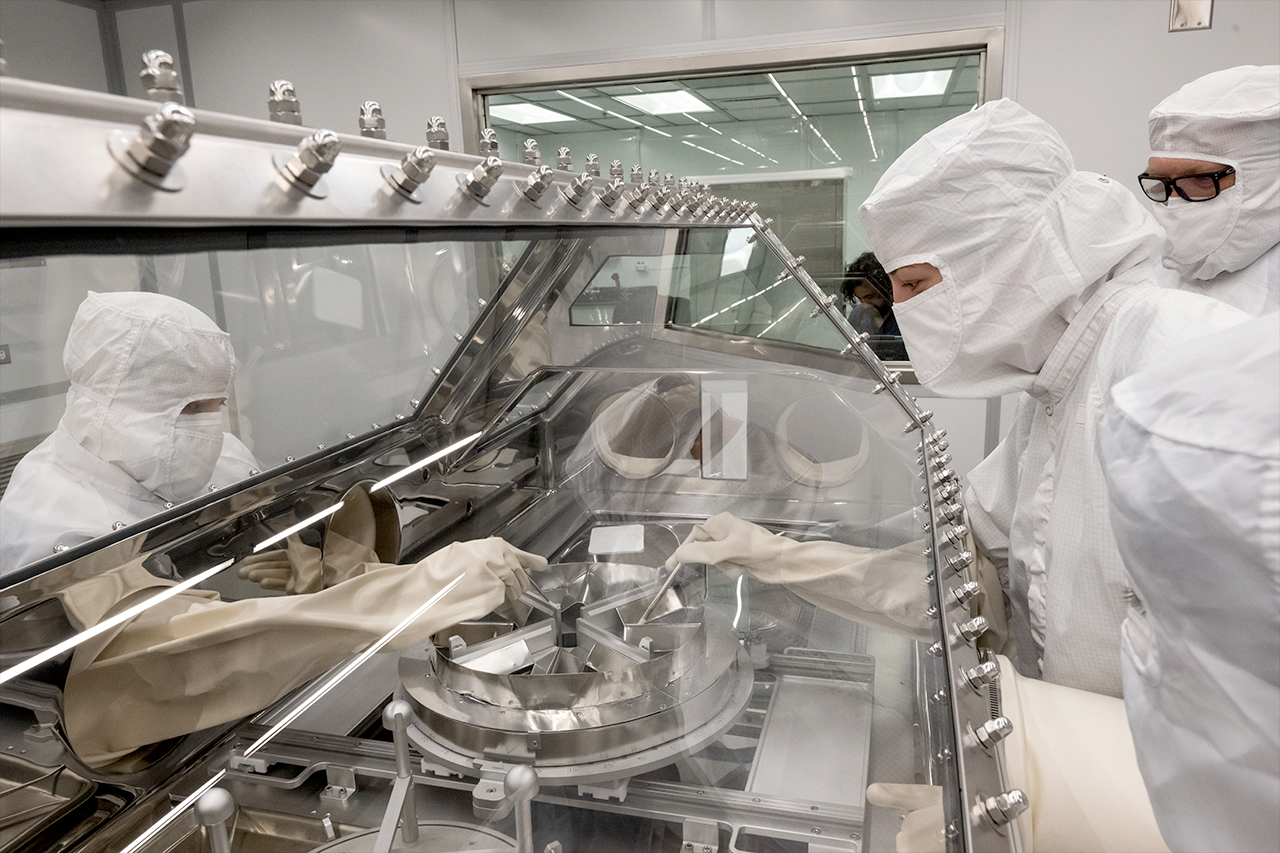NASA's OSIRIS-REx capsule just landed with samples of asteroid Bennu. Next stop: Texas
A new OSIRIS-REx Curation Laboratory in Houston awaits delivery of the asteroid samples, which will first be inspected at NASA's Johnson Space Center.
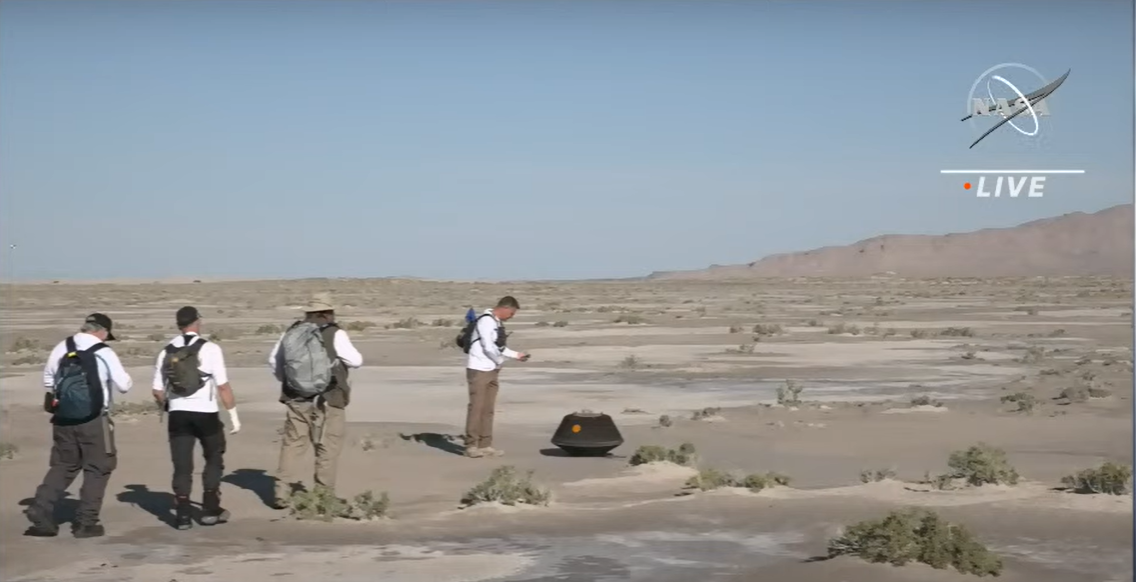
Hey NASA, you've just landed your first samples from an asteroid! Where are they going next?
Houston, of course.
Wrapping up a seven-year-long, nearly four-billion-mile (6.4 billion kilometers) journey to the asteroid Bennu and back, the U.S. space agency's OSIRIS-REx spacecraft deployed its sample return capsule (SRC) to land in the Utah desert on Sunday (Sept. 24). A team of NASA scientists and Lockheed Martin engineers were on site within a minute of the touchdown to begin the process of retrieving the capsule and about half a pound (8.8 ounces or 250 grams) of rocks and soil that is estimated to be on board.
After ensuring the area was clear of any unexploded ordinance, the capsule landed as planned within the Department of Defense's Utah Test and Training Range (UTTR) — and when the well-traveled hardware was safe to approach, the team began securing the capsule and loading it into a cradle. The latter was important because it allowed the capsule to soon be hoisted by a helicopter and taken to a temporary clean room at UTTR.
"When we first come into the hangar, the team there will unbag the SRC and try to clean off some of the dirt and dust that that it might have picked up. We can't get it pristinely clean, but we can knock off big hunks of the desert floor," Richard Witherspoon, Lockheed Martin's OSIRIS-REx ground recovery lead, said in an interview with Space.com. "And they will take scrapings from the heat shield and back shell at that time, which will go off for later analysis."
Related: NASA's OSIRIS-REx lands samples of asteroid Bennu to Earth after historic 4-billion-mile journey
Once inside the clean room, the SRC will start getting disassembled. By this point, there's a chance scientists will get their very first look at samples from Bennu.
Breaking space news, the latest updates on rocket launches, skywatching events and more!
"We're never expecting to expose any sample while we are in the cleanroom at UTTR. The one thing that might be different though, is when we stowed the touch-and-go sample acquisition mechanism (TAGSAM) in the SRC [while still in orbit around Bennu], we did so quickly because the it was literally overflowing with regolith [soil] and the mylar flap that was supposed to be a one way valve was held open by a very large rock," Witherspoon said. "So it's possible that while we were stowing the TAGSAM, a little bit of the regolith might have escaped and gotten trapped inside of the SRC."
If that is the case, the team will carefully collect the escaped material while still in Utah.
Engineers will then remove the SRC's heat shield and backshell so the two can be trucked to Lockheed Martin's facilities in Denver for analysis. That work will also expose the "avionics deck" for what might be the most important step of this preliminary work.
"We need to get the samples under a nitrogen purge," Witherspoon said. "There's a spot on the avionics deck where we will push in a needle through which we flow ultra-high purity nitrogen. That creates a positive pressure that [prevents Earth's atmosphere from flowing in and contaminating the sample]."
The team will then wrap up the avionics deck and place the entire assembly into a shipping container before retiring for the day.
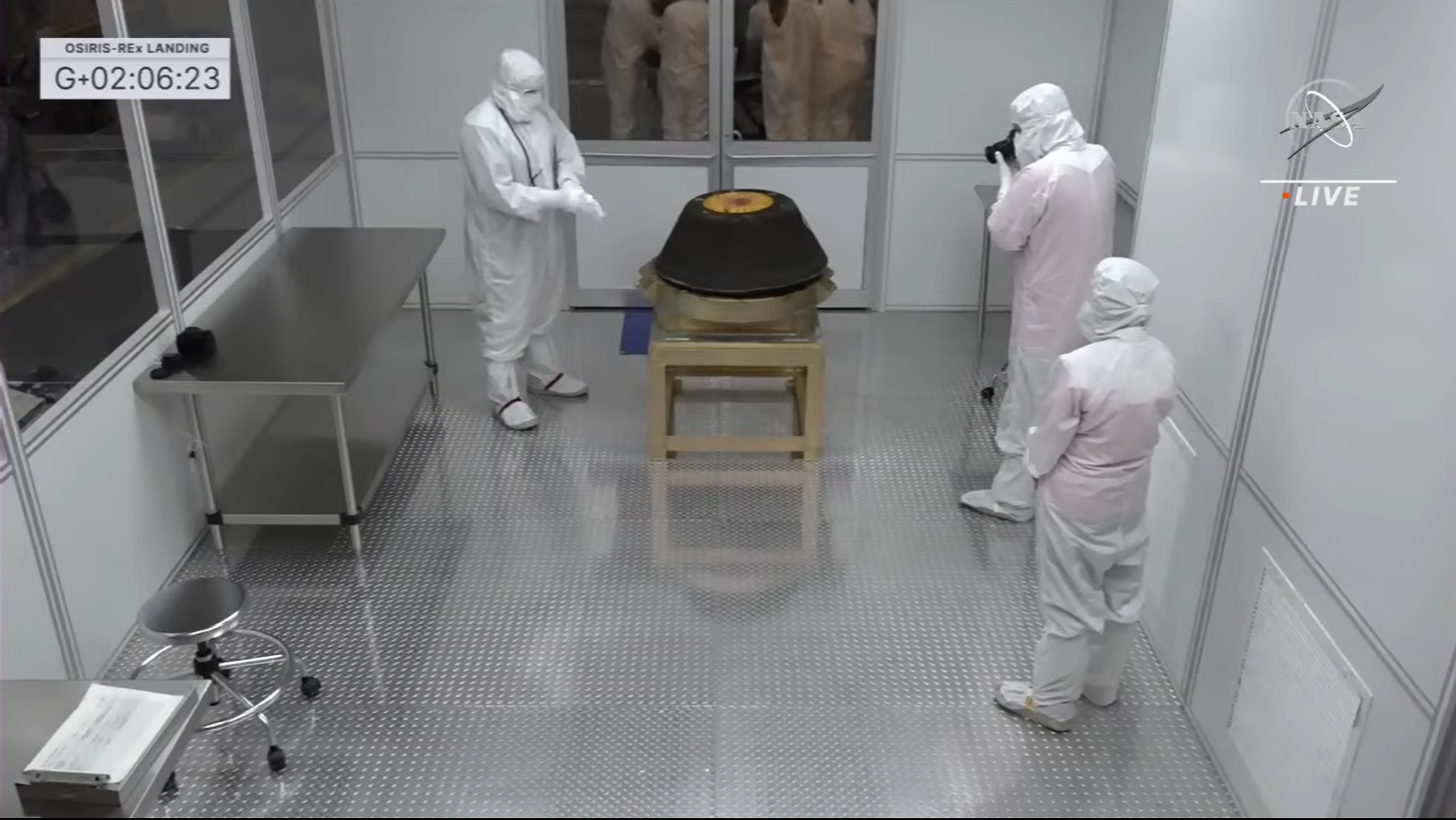
From outer space to Houston
Early Monday morning (Sept. 25), the team will come together once more to load the partially disassembled capsule onto a C-17 military transport plane for an 8:00 a.m. MDT (10:00 a.m. EDT or 1400 GMT) flight to Ellington Field in Houston.
"Once on the ground in Texas, we load all of the equipment onto a box truck and caravan from Ellington Field to Johnson Space Center," Witherspoon said. "We have a police escort while we're doing that, just in case there is traffic, but we are landing and moving before rush hour starts in Houston."
Upon arriving at Building 31 — the same facility that houses the majority of moon rocks brought back by Apollo astronauts as well as other astromaterials collected by NASA missions — the OSIRIS-REx payload will be placed in a pair of cleanrooms.
"In the first cleanroom, we take off one of the layers of bagging, we clean everything and we get it onto the nitrogen purge that is inside of that lab. Then that's a safe place to leave the sample overnight if we need to," Witherspoon said. "But then either we will continue on that day or on Tuesday morning and move to the upstairs lab, which is called the OSIRIS-REx Curation Lab and was specially built for this mission."
The new curation laboratory has specialized gloveboxes for handling both the Bennu samples as well as the hardware used to grab material from the asteroid's surface and deliver it to Earth.
"Once the avionics deck goes into the glovebox, there is one final step that Lockheed engineers do and that is to open and take the lid off of the science canister, which then exposes the TAGSAM," Witherspoon said. "We lift that off and put it into a special fixture that curation gave us and then that is when we are done. We back away, we leave the room and the NASA-led curation team comes in and starts the disassembly of all the components."
Sample study
NASA anticipates it will take several weeks from the point the lid is opened for the team to carefully and methodically fully disassemble the hardware to reveal the pristine asteroid inside.
"Once that occurs, we will start to characterize the sample, understand better what we have, how much we have and how many different rock types and lithologies there might be within the sample," Kevin Righter, NASA's curator for the Bennu material, said during a pre-landing press briefing. "That characterization will be used to determine the material that we allocate to our international partners from JAXA [Japan Aerospace Exploration Agency] and the Canadian Space Agency, as well as determining what material will be appropriate to allocate to the science team for their studies."
It is believed the Bennu sample will help us learn how our solar system and planets evolved. The returned material will help scientists investigate planet formation and the origin of organics that may have led to life on Earth, hence the "O" in the mission's full name, "Origins, Spectral Interpretation, Resource Identification and Security–Regolith Explorer" (OSIRIS-REx).
"We believe that we're bringing back representatives of the seeds of life that the asteroids delivered at the beginning of our planet, which led to this amazing biosphere, biological evolution and to us being here today to look back on that amazing history to think about where did we come from and where are we going," said Dante Lauretta, principal investigator for the OSIRIS-REx mission at the University of Arizona, Tucson.
NASA has scheduled a press conference for Oct. 11 to provide a first look at the samples and the preliminary findings by its science team.

Robert Pearlman is a space historian, journalist and the founder and editor of collectSPACE.com, a daily news publication and community devoted to space history with a particular focus on how and where space exploration intersects with pop culture. Pearlman is also a contributing writer for Space.com and co-author of "Space Stations: The Art, Science, and Reality of Working in Space” published by Smithsonian Books in 2018.
In 2009, he was inducted into the U.S. Space Camp Hall of Fame in Huntsville, Alabama. In 2021, he was honored by the American Astronautical Society with the Ordway Award for Sustained Excellence in Spaceflight History. In 2023, the National Space Club Florida Committee recognized Pearlman with the Kolcum News and Communications Award for excellence in telling the space story along the Space Coast and throughout the world.
